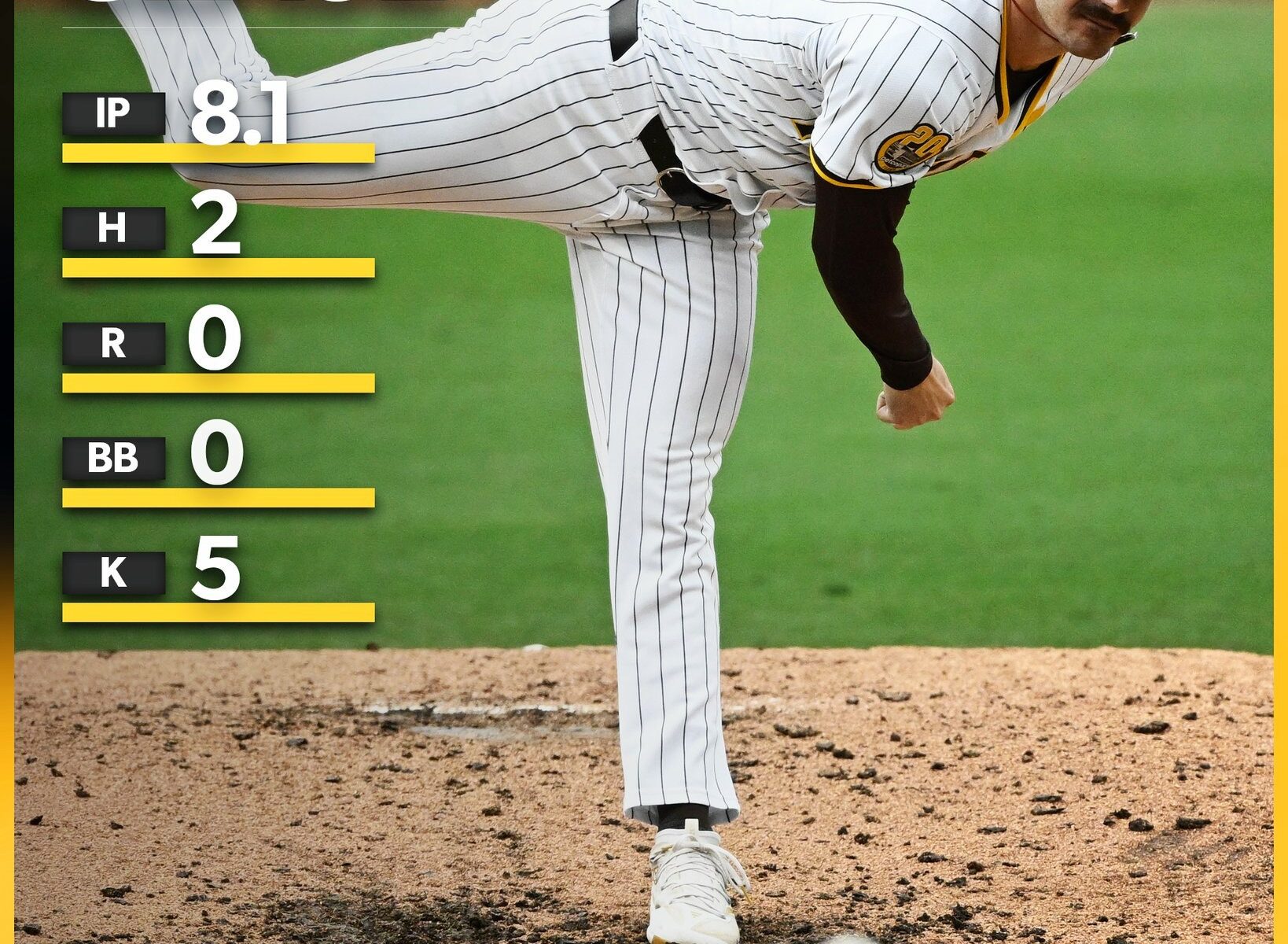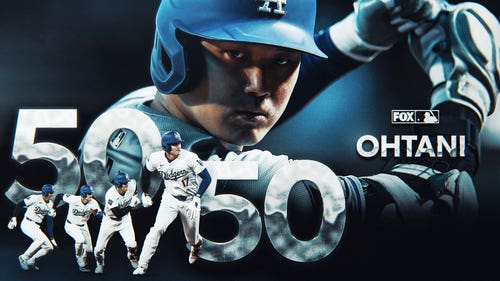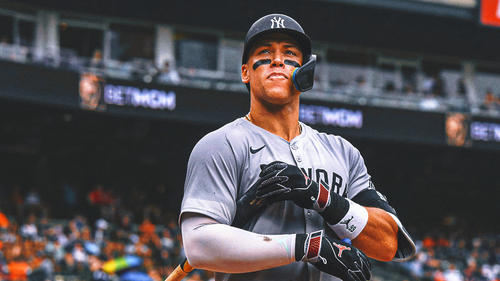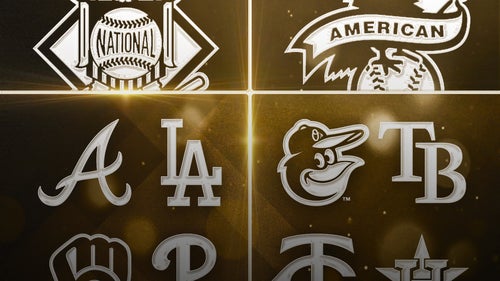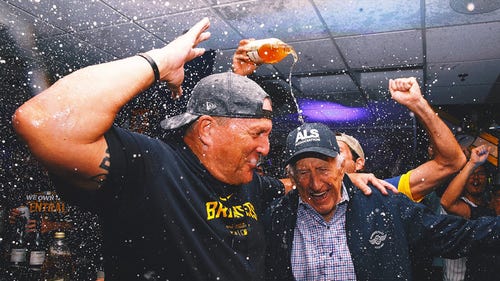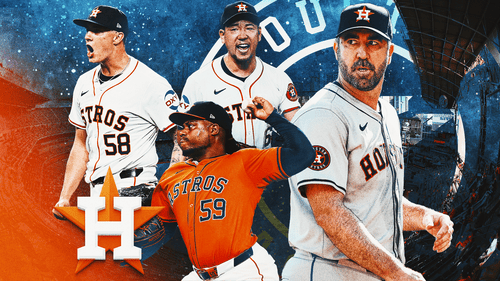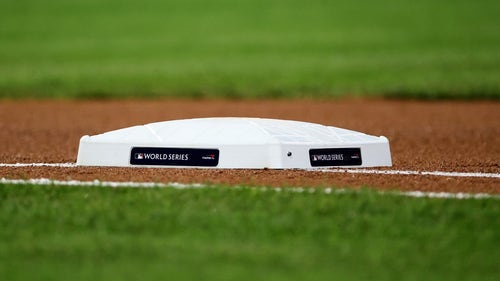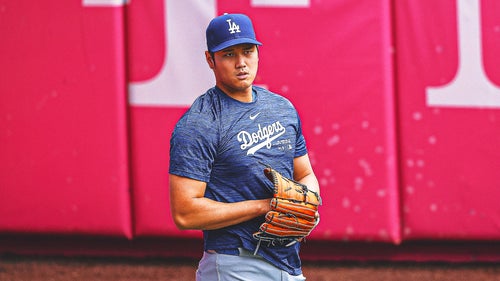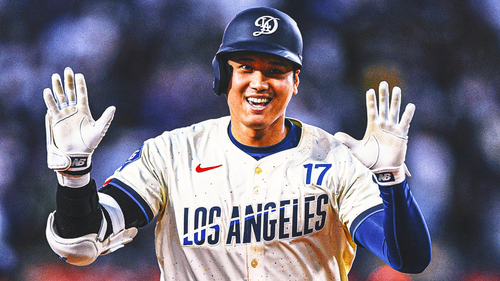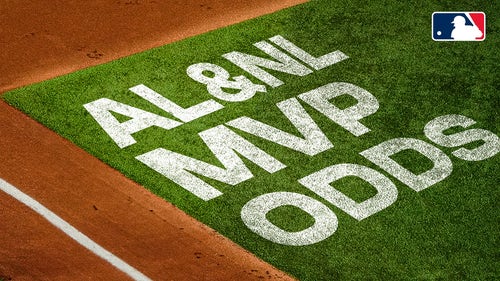<!–>
The MLB postseason picture is finally coming into focus. The six division races are all but decided, while only a few wild-card spots are unspoken for.
And with just over a week remaining in the regular season, playoff-bound teams are surely beginning to have internal discussions about how they’ll attack October.
Accordingly, FOX Sports MLB experts Deesha Thosar and Rowan Kavner tackle these topics and more in this week’s roundtable.
1. Which of the current AL wild-card hopefuls (excluding the Orioles) would be the toughest out in a playoff series?
ADVERTISEMENT
Thosar: The Twins. They just advanced to the ALDS last year, before getting bounced by the Astros, and have the most experience compared to the other AL wild-card hopefuls to hang in there and turn it on when it matters. Carlos Correa is back in the lineup for the first time since mid-July, and though it’s unclear if he’s at 100 percent following a prolonged absence due to plantar fasciitis, the shortstop being back in the mix is a huge boon for a Minnesota team that had been floundering without him. Even though Correa had been on the injured list since the All-Star break, he remains the team leader in fWAR (3.8), with returning center fielder Byron Buxton (3.4) right behind him.
The pitching staff has its concerns, with Pablo Lopez and Bailey Ober not exactly representing the most lethal 1-2 punch. But Minnesota enters the final stretch of the regular season tied with Phillies for the eighth-best offense in baseball in terms of wRC+, and Correa loves the spotlight of October baseball. Royce Lewis hasn’t looked like himself the past couple of weeks, but he did crush four home runs in the postseason last year and figures to give opposing pitchers some headaches in a playoff series.
Kavner: Despite how this year has gone for them, I still would’ve taken the long-shot Mariners here considering the depth of their rotation and how Julio Rodriguez had finally found his groove … until last night’s debacle, which might have put the final dagger in Seattle’s disaster second half. So, given the M’s minuscule odds, I’ll go with the Royals for many of the same reasons — a deep rotation and a superstar player who might be able to make up for the team’s concerns. It’s worth noting, though, that those issues, particularly with Kansas City’s bullpen and lineup depth behind Bobby Witt Jr. and Salvador Perez, have become rather alarming amid a September skid. If a wild-card team does end up making a deep run, I’d expect it to come from the National League.
2. The Padres are the X-best team in the National League. Do you consider them the most dangerous wild-card club in all of baseball?
Kavner: Third, behind the Phillies and Dodgers. And, yes, they’re the most dangerous wild-card club in baseball. The youthful Orioles, the reigning NL champion Diamondbacks and the red-hot Mets certainly have arguments, but Baltimore’s steep second-half decline is concerning, and I don’t think there’s a scarier wild-card club than the Padres when you combine their additions in the bullpen with the way their rotation and top sluggers are rolling. Manny Machado, in particular, is on an absolute tear.
RELATED: How Shohei Ohtani, without half his powers, rewrote MLB history again and went 50/50
Thosar: This would be a tougher call between the Padres and the Mets if Francisco Lindor and his ailing back hadn’t forced the MVP candidate to miss games, with no certainty for how long he’ll be compromised, so San Diego has the edge as the most dangerous wild-card club right now. Fernando Tatis Jr. has completely turned it on since returning from a leg stress fracture and that’s given the Padres a nice, well-timed jolt. Tatis’ return, and the terrific results that have followed, have made the Padres one of the most complete teams in the playoff race.
Their offense is top five in the majors, their bullpen is tied with Milwaukee for the best fWAR in baseball since the second half, thanks to their splashy relief additions, and the Dylan Cease-led rotation is stacked. Nobody wants to draw the short straw and play the Padres in a playoff series given how they’ve been excelling lately. They’re the NL’s third-best team behind the Phillies and the Dodgers.

3. At this point, how would you set the Dodgers’ playoff rotation for a seven-game series?
Thosar: Even though it’s unclear how stretched out Yoshinobu Yamamoto will be by the time the first week of October rolls around, I think they have to go with the $325 million dollar man as the Game 1 starter. After that, it’s right-hander Jack Flaherty, who got roughed up in his most recent start against Atlanta but had a 2.61 ERA over seven starts before that. Then, without Tyler Glasnow and Clayton Kershaw, it’s a crapshoot for Games 3 and 4 before the rotation turns around again to Yamamoto.
Surprisingly, right-hander Walker Buehler pitched excellently in his last outing against the Braves, allowing one earned run and striking out five. Even though Buehler is still giving out too many free passes, he might be the Dodgers’ best option for a Game 3 start. If Game 4 is a competition between Landon Knack and Bobby Miller, the latter was just sent back to the minors after lasting two innings versus the offensively challenged Marlins. At this point, Game 4 could mean throwing Knack on the hill and hoping the Dodgers offense can do enough damage to overcome any uncertainty of his outing.
Kavner: Jack Flaherty, Yoshinobu Yamamoto and … woof. Given that Tyler Glasnow and Gavin Stone are probably out the rest of the way and Bobby Miller hasn’t figured things out, the rest depends a lot on the health of Clayton Kershaw, who is doing everything in his power to get back from a toe injury. For now, though, we can’t assume he will. Four starters are probably a necessity the way the NLDS is set up.
Since it appears Yamamoto will continue to be given extra rest even in October, I would have Flaherty for Game 1 so he can be called upon again on short rest if needed. With the pieces currently available to them, that would leave Walker Buehler for Game 3 and Landon Knack for Game 4 with a cavalcade of bullpen arms ready to go quickly behind them.
4. What do you think about the Dodgers possibly having Shohei Ohtani pitch in the postseason?
Kavner: It’s a fun thought, but at this point nothing more than that. I recognize the awful situation the Dodgers’ pitching staff is in and that Ohtani could very well be a better option than what they have, but I still think it’s a major long shot not worth risking. It’d be different if he had already started facing hitters (he hasn’t) or if he would get a chance to build up with some regular-season starts first (he won’t). So, that means he’d be entering the highest-pressure environment in baseball having not pitched in a major-league game in more than a year. Just this week, he told reporters he’s not sure yet if he could physically do that and the team hadn’t talked to him about the possibility yet. For a club that has already felt the wrath of serious injuries plaguing the entire pitching staff, it just feels like too much of a gamble for a player the Dodgers will be counting on for the next decade.

Thosar: The surreal images of Ohtani getting the final out against Mike Trout in the World Baseball Classic in Miami come to mind. If that scene was any indication, Ohtani the closer in the playoffs would be thrilling on all accounts. The Dodgers’ vacant pitching staff could absolutely use an Ohtani-sized boost. But it doesn’t actually seem realistic, as far as his rehab, to do it. Ohtani would need to continue his pitching progression throughout the playoffs, and it’s unclear how feasible that will be once the Dodgers are in October. He’s throwing bullpens now, but he still needs to face hitters. And in order to keep up the intensity of his progression, Ohtani would likely have to complete his rehab work before and maybe even after playoff games.
Everything will be kicked up a notch in the postseason, and it’s not out of the question for a unicorn like Ohtani to be able to handle such an aggressive work, game, travel, and media playoff schedule with ease, but it seems like too much stress and intensity just for a “maybe” possibility of pitching this soon since his elbow operation.
5. How would you set the Yankees’ playoff rotation for a seven-game series?
Thosar: The Yankees rotation is a solid unit with legitimate strengths, but a couple of arms will have to be excluded from starting-pitcher duties, and while that could be a good problem to have, it’s still a problem. Game 1 is a no-brainer with ace Gerrit Cole getting the ball. For Game 2, veteran Carlos Rodon has earned the nod and that’s what the Yankees had planned as their 1-2 playoff punch when they acquired the right-hander before last season. Then, it could get tricky. Clarke Schmidt has looked excellent since returning from injury, and he would make sense as a Game 3 starter who could quietly and efficiently shut down opposing offenses.
For Game 4, it looks more and more likely that rookie Luis Gil will get the ball, with someone like Nestor Cortes or Marcus Stroman ready to piggyback him if necessary. It will be interesting to see if Gil’s increased workload, after blowing past his career high in innings pitched, will have an effect on his velocity and command issues overall. He’s earned the opportunity to at least get the nod, but then again, so has Cortes, who has completed a career-high 30 outings (one bullpen appearance) for the Yankees this year. But, since Gil has the best strikeout percentage on the pitching staff, he should get Game 4.

Kavner: Gerrit Cole and Carlos Rodón for the first two games. Then, the decisions get tougher. Unlike the NLDS, there’s a rest day between each of the first three games of the ALDS, meaning AL playoff teams really only need three starters, at least in a division series. That’s a luxury that’ll help other teams more than the Yankees, who have six capable starters for those three or four spots. Because of that, I’d consider piggybacking the right-handed Luis Gil and the left-handed Nestor Cortes in Game 3. If Gil is striking everyone out, let him go and save Cortes. If his free passes become an issue, Cortes can take over before things snowball on the rookie.
Deesha Thosar is an MLB writer for FOX Sports. She previously covered the Mets as a beat reporter for the New York Daily News. The daughter of Indian immigrants, Deesha grew up on Long Island and now lives in Queens. Follow her on Twitter at @DeeshaThosar.
Rowan Kavner is an MLB writer for FOX Sports. He previously covered the L.A. Dodgers, LA Clippers and Dallas Cowboys. An LSU grad, Rowan was born in California, grew up in Texas, then moved back to the West Coast in 2014. Follow him on Twitter at @RowanKavner.
[Want great stories delivered right to your inbox? Create or log in to your FOX Sports account, follow leagues, teams and players to receive a personalized newsletter daily.]
–>
recommended

Get more from Major League Baseball Follow your favorites to get information about games, news and more
Link to Original Article - on Fox Sports

